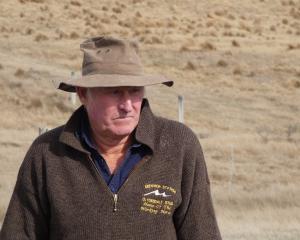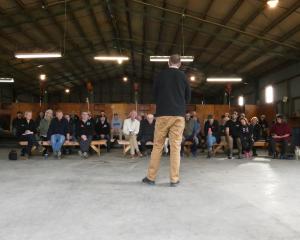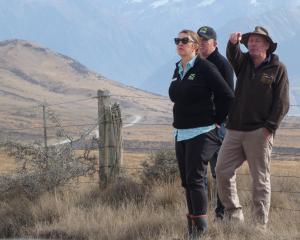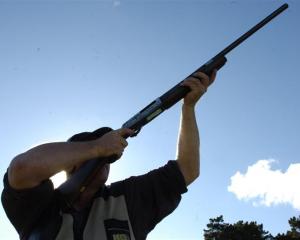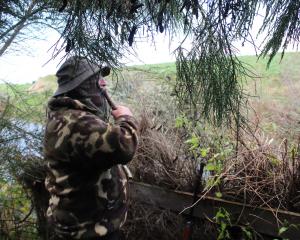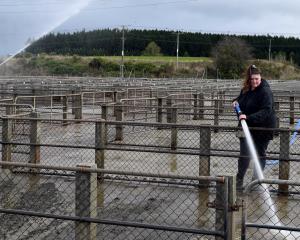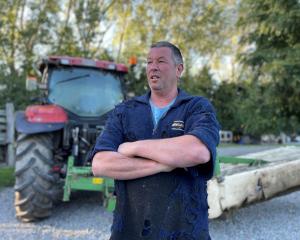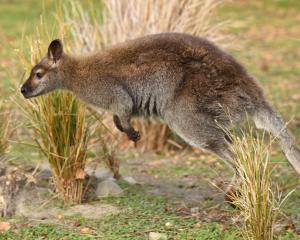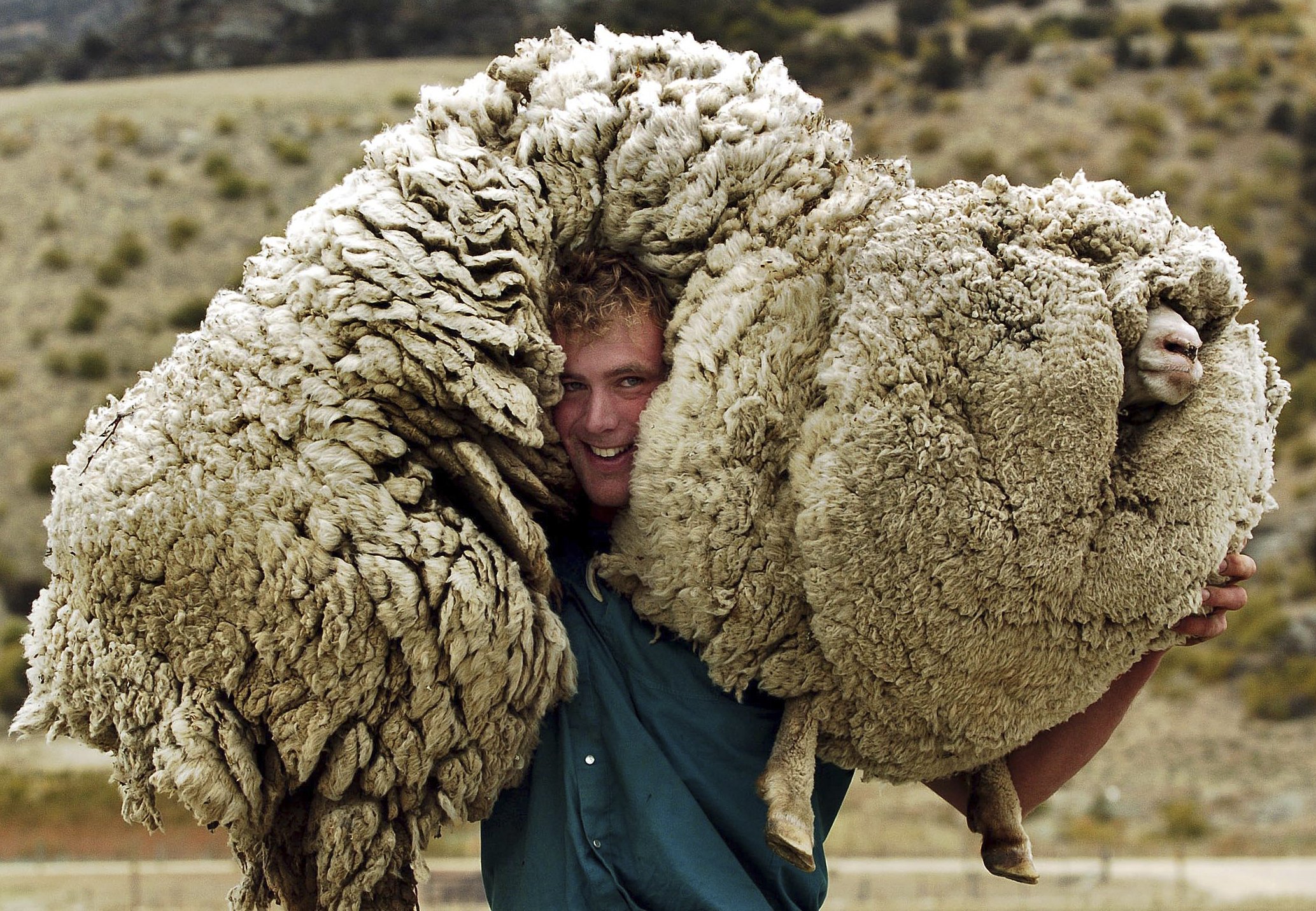
How time flies.
April 15 marks 20 years since a woolly mammoth was discovered on a rocky outcrop on Bendigo Station in Central Otago.
Some discounted the Shrek story as untrue and made up, others cited animal cruelty, a few tried to cash in with their own unshorn sheep, but for every critic thousands embraced his extraordinary story with love and in awe.
I often think the life of a journalist is like riding on a bus. The bus pulls up, we hop out and dive into someone’s life.
Often, we are reporting on traumatic events, sharing very personal stories with complete strangers.
Or perhaps they have excelled, or queued for 48 hours to buy a ticket, or ... and then we hop back on the bus to move on to the next story probably never to see the previous person again.
Not so with Shrek — his was a story that kept on giving.
April 15, 2004, was a typical, crisp, Central Otago morning.
I was enjoying a few days’ holiday at Wānaka when the gamekeeper at Bendigo Station gave me a call.
“Gidday, Steve Brown speaking. I wonder if you want to come through to Bendigo and photograph a sheep with a large fleece,” he said.
The last time Steve and I had tangled was when he was trying to catch Slippery Jack, a trophy stag which had saved its own neck by escaping from the station game park, but was upsetting the Tarras community by running amok, creating havoc in people’s gardens and the like.
When I arrived at Bendigo Station the centre of attention looked like a sprung wool pack about the size of a 44-gallon drum supported by short sticks, which I assumed were legs, and a pink nose.
One of the intrigued people in the crowd was a visiting pony club rider who said she thought he looked like the ogre cartoon character Shrek.
The name stuck.
Not long after, I had station owner John Perriam and Shrek in my viewfinder atop a massive schist rock.
I was impressed by the rock, but not so certain about the sheep.
I tried my darndest to get John to shear it there and then.
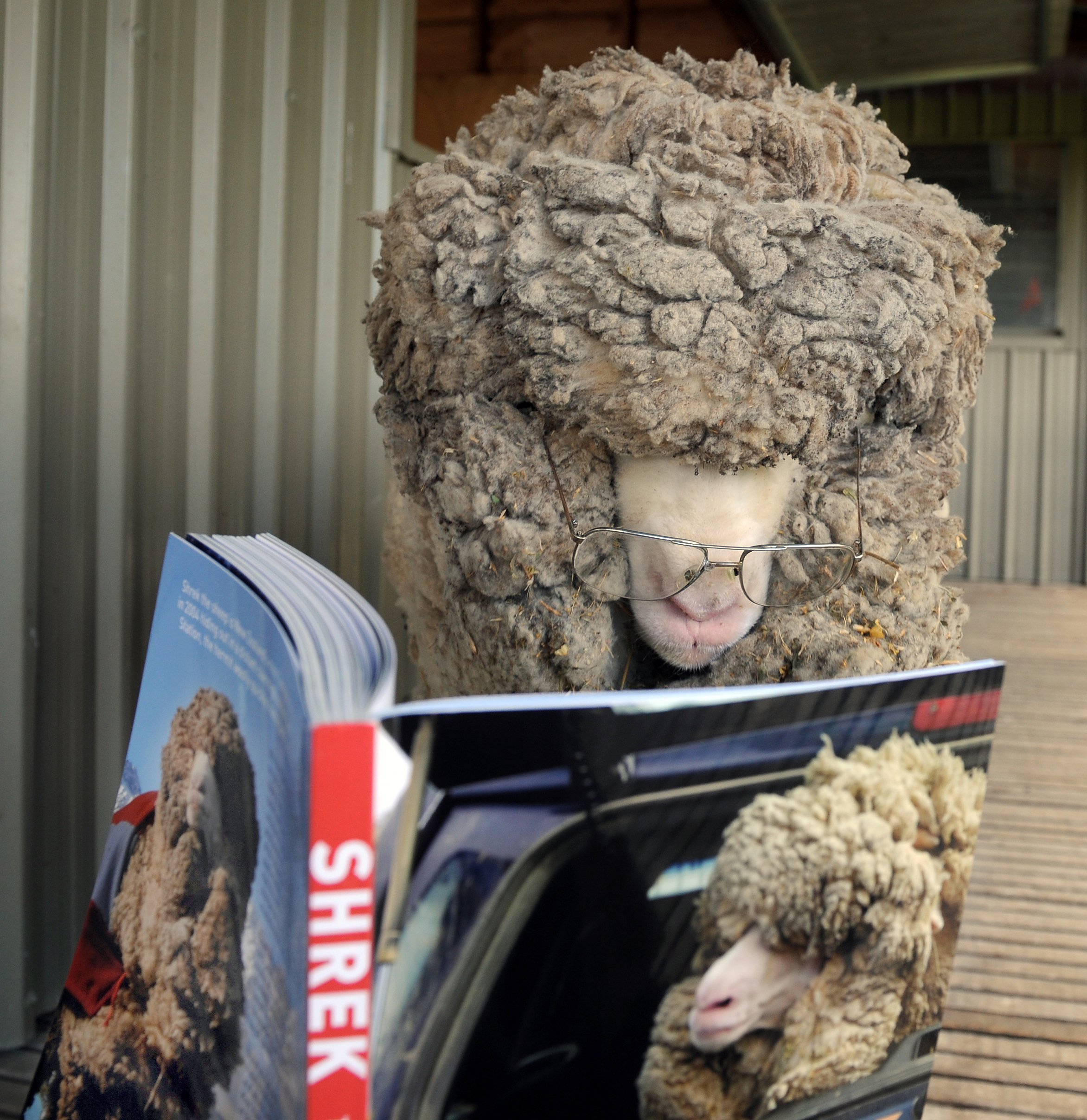
But John was not having a bar of it.
It was the gamekeeper’s understudy, Digger, who made the next suggestion.
“Show Stephen how you carried it out, Cage,” he urged.
"Cage Fighter" (for obvious reasons), or Daniel Devine to his mother, was one of the shepherds helping muster the flock of merinos down from the high country.
Cage was the mustering muscle.
The late Anne Scanlan, lean and fit and a tremendous stockperson, had found and caught the hermit sheep.
The sheep blinded by an overhang of wool covering its eyes, Anne was able to sneak up behind the massive wether and roll it on its back.
She then discouraged Cage from ending the story early (you understand my meaning).
Anne asked Cage to throw the sheep over his shoulders and carry it back to the ute before driving it off the hill in style.
Once more Cage followed instructions. He slung Shrek over his broad shoulders, then shook his head out from a belly of foot-long fleece.
Was it a smile or was it a grimace? (Shrek repaid Cage for this uncomfortable hoist by urinating on his neck!)
I had the shot.
The Otago Daily Times published the photo on the front page, other major daily newspapers in the country following suit.
Reuters picked it up, and within 24 hours the photograph of Cage and Shrek was published in newspapers and on websites all around the world.
John’s phone started ringing hot.
The hermit sheep who evaded muster for five years had become an overnight sensation.
Journalists from all over the world asked a thousand questions looking for a new thread to the story.
Television stations, radio stations and newspaper reporters turned up unannounced to Bendigo Station all looking for a unique angle on this bizarre story.
CNN, BBC and Channel 9 in Australia were among the fray.
While all the drama was happening in Bendigo, I was back in Dunedin feeling quietly pleased to have played a part when my phone rang — it was John Perriam.
"Stephen", he said, "I’ve have had a call from Paul Holmes. He wants Shrek shorn live on TV and broadcast live around the world on CNN."
Knighted a fortnight before he died, Sir Paul Holmes was a nationally recognised broadcaster.
The aggressive, compassionate, smarmy and always pushy presenter was loved by some, hated by some, but watched by most.
John was apprehensive about shearing Shrek on live TV.
So many things could go wrong.
Nicking a vein could cause an uncontrolled bleed, shock caused by losing all that wool could be fatal.
On the other hand, Shrek was raising funds for Cure Kids, and as someone who had long-championed New Zealand’s merino sheep to the world, John could see the remarkable marketing opportunity.
The live shearing went without a hitch.
Shrek was a superstar — he followed John through a paparazzi welcome of flashlights and film crews all pushing and shoving, into a crowed room with bright lights and an ever-changing Paul Holmes.
With the camera on him Holmes was charming and grinning; when they were directed elsewhere he was waving at his crew to shoo the other media away — this was his exclusive.
Slightly shell-shocked, sombre but less and less sober, a handful of us sank into leather couches around a blazing fire at Bendigo Station later that night.
Shearer Peter Casserly had expertly shorn a 27kg fleece, enough to make 20 large men’s suits, from Shrek — whose body weight was reduced to 19kg.
To the delight of the assembled crowd Peter also threatened to shear off some of Holmes’ fingers if he didn’t stop prodding Shrek.
It was broadcast on CNN, BBC, Reuters, Channels 7, 9 and 10 in Australia, APTN in Hong Kong and TV1 in New Zealand, and watched by an estimated 1.2 billion people around the world. John Hall, former chairman of advertising agency Saatchi and Saatchi, estimated it would have cost $100 million to buy the amount of exposure Shrek had generated for New Zealand.
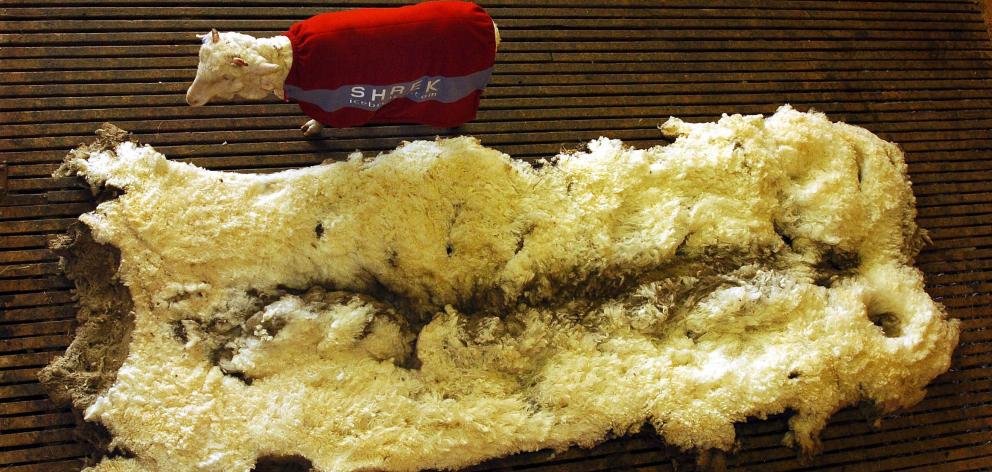
Dave Cannan, then ODT chief reporter, and I had filed our copy to the paper before enjoying the famous Perriam hospitality.
We had beds in the shearing quarters adjoining the homestead, but decided to look in on the superstar before hitting the sack.
Shrek was comfortably settled down, head up, chewing the finest lucerne John could find.
The heaters were going to keep him warm and there was even comforting music playing from a radio.
To our horror, a length of bailing twine had tangled with the lucerne he was eating, with the end of it fast heading into his mouth.
Gently, we pulled out over a metre of twine Shrek had ingested.
Crisis averted, it was time for bed.
Shrek, more or less an overnight sensation, was popular and demanded a pretty fee: $20,000 per appearance, a better fee than the All Blacks.
He travelled by limo, helicopter, domestic airline, private jet and boat.
John often quipped that Shrek gained more frequent flyer air points than most people.
International film crews were fitted in around A&P shows, rest-homes and a visit to Parliament, where then prime minister Helen Clark even made national headlines by snubbing a seabed and foreshore protest hikoi in favour of being photographed on the steps of Parliament with Shrek.
The ODT continued with some inside coverage of Shrek but its news directors saw him more as a woolly anomaly that had had outlasted its interest to readers.
The editor even joked when the subject of Shrek came up: "Would that be Shrek 1, Shrek 2, or Shrek 3?".
What they did not see, however, was how Shrek continued to captivate an audience.
It would take something special for Shrek to make the front page of the ODT again.
Two and a-half years after Shrek was shorn in front of a worldwide audience, another freak of nature had John Perriam awake in the middle of the night, scheming.
Wearing a deep-sea immersion suit, lifejacket, body harness and crampons, I had flown by helicopter 100km off the coast of Dunedin looking for an unlikely flotilla of icebergs reported by a fisherman the previous night.
Indistinct at first, more like a breaking wave, and then looking like the superstructure of a ship as the distance lessened, the magnificence of the iceberg as we hovered near it had captivated everyone aboard the helicopter.
It was tremendous — a 100m-high shimmering block of ice towering from the sea with an underwater footprint glowing an iridescent blue in the grey-blue of the water.
Images of the iceberg captivated viewers in New Zealand, Australia and other parts of the world, and sowed a seed in the mind of the farmer, also an astute publicist, in Central Otago.
The telephone call came the next day.
"Stephen, John Perriam here. I have an idea."
"You want to shear Shrek on an iceberg," I immediately and correctly replied, but discounted John’s confirmation just as quickly.
"Impossible. They are far too dangerous," I said.
I was speaking from experience.
I had landed on the iceberg the previous day.
Stepping on to the glassy surface I experienced an overwhelming feeling of suspense, as if the whole thing could break up at any moment.
When the helicopter backed away the air was filled with loud reports, like rifle shots, as the berg moved and cracked.
The sea slopped and washed its base smooth and a trail of growlers marked its path.
This iceberg may have taken thousands of years to form but as it drifted into warmer waters it was quite obvious that it was not much longer for this world.
It was only after a week of more flights out to other icebergs as they drifted past the coast of Otago and some careful consideration that I phoned John back and said maybe, just maybe, if the right iceberg arrived.

"A man shore a sheep on an iceberg yesterday — and no I’m not making this up," he wrote.
An exploratory trip south had identified a massive, flat, iceberg on its way.
We had to move fast: the forecast indicated stormy weather was approaching and the drifting iceberg would soon have it out of reach of the helicopter. We had a window of two days at most.
Aside from worries about the iceberg breaking up, Shrek falling off, the weather, etc, we were concerned the SPCA may take a dim view of shearing Shrek 100km off the coast of New Zealand on an iceberg, or even that MPI might call a halt on the grounds we could carry a foreign body back to shore.
It was a need-to-know only mission.
With the storm approaching and helicopters hovering a large woollen rug was laid on the iceberg and blade shearer Jimmy Barnet clipped the second fleece off Shrek.
The resulting publicity was ... Shrektacular!
National and international news and people all around the world were again talking about that "hermit sheep" from New Zealand.
Shrek was back in hot demand as a celebrity guest around the nation, and the money rolled in for Cure Kids.
Money also rolled in for the 13-pupil Tarras School.
Pupils penned two books starring Shrek, one of which sold over 40,000 copies.
The $100,000 raised funded an additional teacher, sports equipment, new technology and trips away.
Shrek was shorn twice more. Once up Auckland’s Sky Tower followed by a lower-key shearing at Tarras School.
When John’s wife Heather, a matriarch and inspirational role model of the local community, died of cancer in 2010 over 1000 people attended her funeral and the family received over 2000 sympathy cards.
Shrek was slowing down about this time as well, living day to day in his luxurious ram shed on the station.
John saw an opportunity for one more fundraising drive in the form of a book, but first he needed some fresh photographs.
A trip to the Far North was planned.
Landing in Auckland, Shrek was bundled out of his crate in the aircraft’s hold into a hired 4WD fitted with a rubber lining.
It made another colourful and delightful adventure.
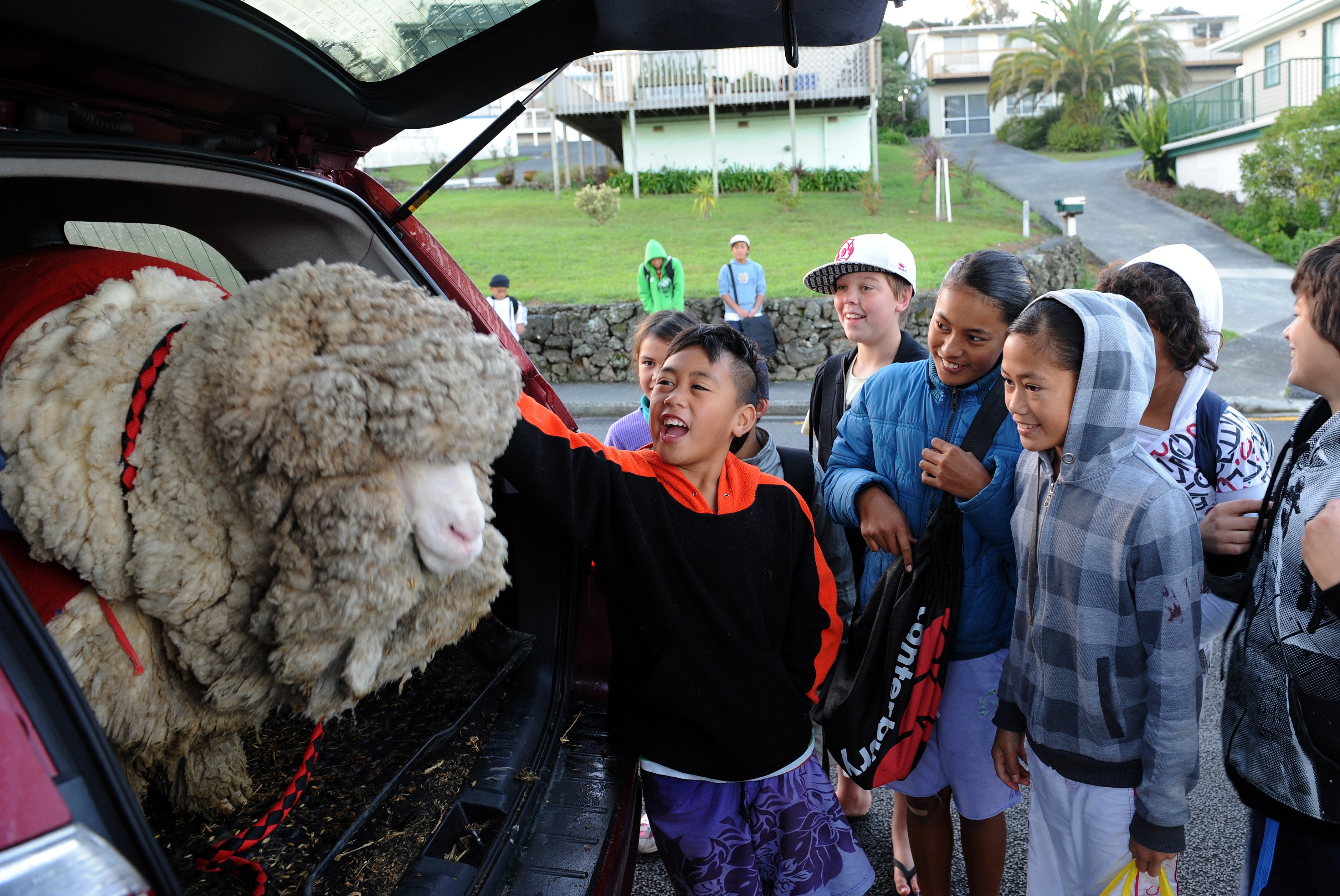
There was a wander over the Treaty grounds at Waitangi.
A bush walk for a photo-op with Tane Mahuta, New Zealand’s largest known living kauri tree estimated at 1250-2500 years old.
Eden Park and Queen St in Auckland.
Shrek took it all in his stride.
The next week we were hauling up crayfish pots in Milford Sound.
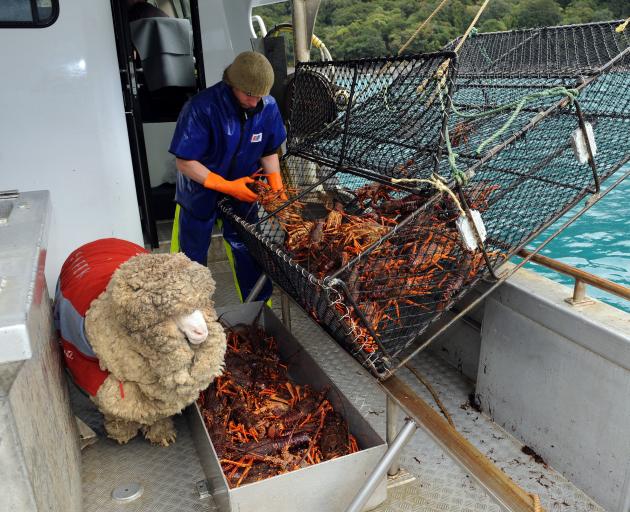
Shrek’s health failed and he died on June 6, 2011.
For seven years, millions of adoring fans had followed the story of this remarkable sheep, who raised $150,000 for Cure Kids.
Shrek was an anomaly, more dog in nature than sheep.
And John, as "father" of Shrek, was exactly the right farmer to direct the story.
A champion of fine wool, familiar with the media, generous with his chosen charity and probably enjoying some of the attention himself.
It was a wonderful chapter in New Zealand’s history and a privilege to have played a small part.


